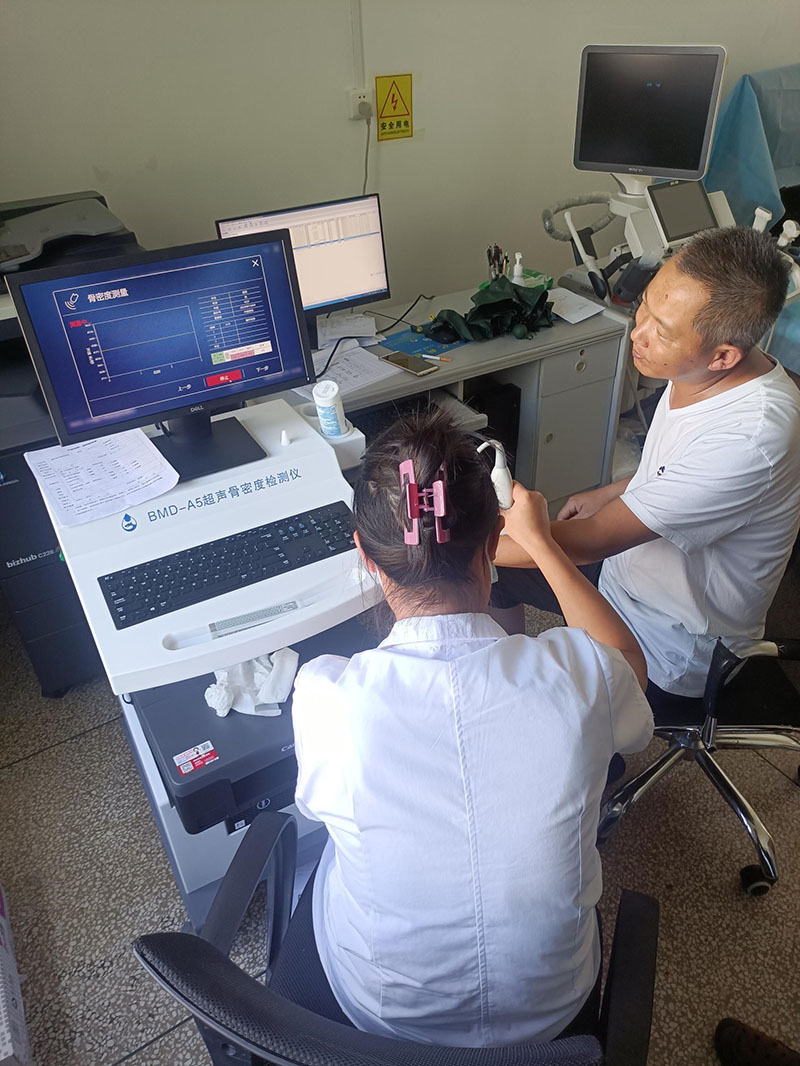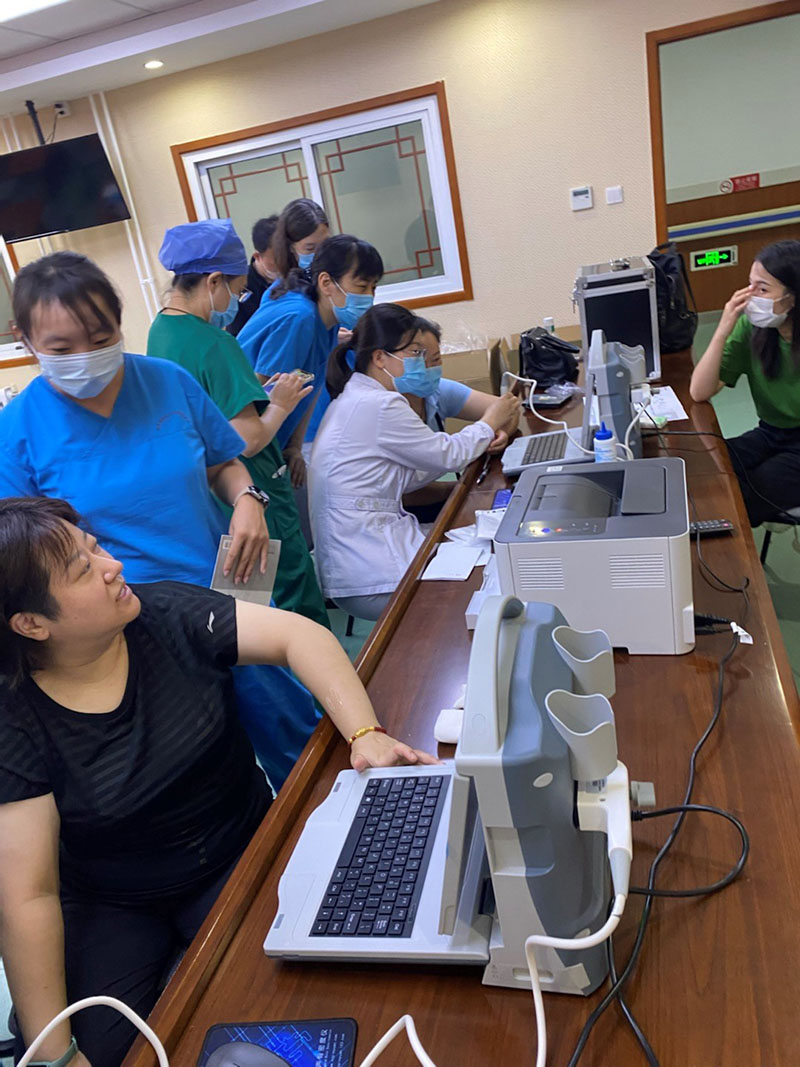Bone density can reflect the degree of osteoporosis and predict the risk of fracture. After the age of 40, you should have a bone density test every year to understand the health of your bones, so as to take preventive measures as soon as possible. (bone density testing through dexa dual energy x ray absorptiometry scans and ultrasound bone densitometry)
When a person reaches the age of 40, the body begins to gradually decline, especially women’s body loses calcium rapidly when they reach menopause, which leads to the gradual occurrence of osteoporosis. , so bone density needs to be checked regularly after the age of 40.
What is the cause of osteoporosis? Is this disease common among middle-aged and elderly people?
Osteoporosis is a common skeletal system disease in middle and old age. Among them, women are more prone to osteoporosis than men, and the number is about 3 times that of men.
Osteoporosis is a “quiet disease”, with 50% of patients having no obvious early symptoms. Symptoms such as back pain, shortened height, and hunchback are easily ignored by middle-aged and elderly people as the normal state of aging. Little do they know that the body has sounded the alarm bell of osteoporosis at this time.
The essence of osteoporosis is caused by low bone mass (ie, decreased bone density). With age, the reticular structure in the bone gradually thins. The skeleton is like a beam eroded by termites. From the outside, it is still normal wood, but the inside has long been hollowed out and no longer solid. At this time, as long as you are not careful, fragile bones will fracture, affecting the quality of life of patients and bringing financial burdens to families. Therefore, in order to prevent problems before they occur, middle-aged and elderly people should incorporate bone health into the physical examination items, and regularly go to the hospital for bone density testing, usually once a year.
Bone density test is mainly to prevent osteoporosis, what is the incidence of osteoporosis?
Osteoporosis is a systemic disease, often manifested as fractures, hunchback, low back pain, short stature, etc. It is the most common bone disease in middle-aged and elderly people. More than 95% of fractures in the elderly are caused by osteoporosis.
A set of data published by the International Osteoporosis Foundation shows that a fracture caused by osteoporosis occurs every 3 seconds in the world, and 1/3 of women and 1/5 of men will experience their first fracture after the age of 50. Fracture, 20% of hip fracture patients will die within 6 months of fracture. Epidemiological surveys show that among people over 50 years old in my country, the prevalence of osteoporosis is 14.4% in men and 20.7% in women, and the prevalence of low bone mass is 57.6% in men and 64.6% in women.
Osteoporosis is not far away from us, we need to pay enough attention and learn to prevent it scientifically, otherwise the diseases caused by it will greatly threaten our health.
Who needs a bone density test?
To figure out this question, we must first understand who belong to the high-risk group of osteoporosis. The high-risk groups of osteoporosis mainly include the following: First, older persons. Bone mass peaks around age 30 and then continues to decline. The second is female menopause and male sexual dysfunction. The third is low-weight people. Fourth, smokers, alcohol abusers, and excessive coffee drinkers. Fifth, those with less physical activity. Sixth, patients with bone metabolic diseases. Seventh, those who take drugs that affect bone metabolism. Eighth, lack of calcium and vitamin D in the diet.
In general, after the age of 40, a bone density test should be performed annually. People who take drugs that affect bone metabolism for a long time, are very thin, and lack physical activity, and those who suffer from bone metabolism diseases or diabetes, rheumatoid arthritis, hyperthyroidism, chronic hepatitis and other diseases affecting bone metabolism, should have a bone density test as soon as possible.
In addition to regular bone density tests, how should osteoporosis be prevented?
In addition to regular bone density examinations, the following issues should be paid attention to in life: First, adequate calcium and vitamin D intake. However, the need for calcium supplementation depends on the physical condition. Most people can get the right amount of calcium through food, but people who are older or have chronic diseases need calcium supplements. In addition to calcium supplementation, it is necessary to supplement vitamin D or take calcium supplements containing vitamin D, because without vitamin D, the body cannot absorb and utilize calcium.
Second, exercise properly and receive enough sunlight. To prevent osteoporosis, calcium supplementation alone is not enough. Regular exposure to sunlight plays a very important role in the production of vitamin D and the absorption of calcium. On average, normal people should receive sunlight exposure for at least 30 minutes a day. In addition, lack of exercise can cause bone loss, and moderate exercise has a positive effect on preventing osteoporosis.
Finally, to develop good living habits. It is necessary to have a balanced diet, a low-salt diet, increase the intake of calcium and protein, and avoid alcoholism, smoking, and excessive drinking of coffee.
bone density testing is included in routine physical examination for people over 40 years old (bone density testing by dual energy x ray absorptiometry bone densitometry
According to the “China’s Medium and Long-term Plan for the Prevention and Treatment of Chronic Diseases (2017-2025)” issued by the General Office of the State Council, osteoporosis has been included in the national chronic disease management system, and bone mineral density examination has become a routine physical examination item for people over 40 years old.
Post time: Aug-30-2022


